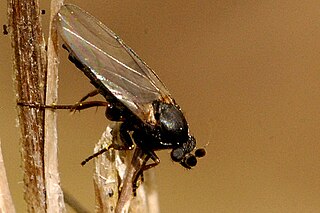
The Metopininae are a subfamily of flies in the family Phoridae.

Phorinae is a subfamily of flies in the family Phoridae. There are at least 90 described species in Phorinae.

Apocephalus is a genus of ant-decapitating flies. There are at least 300 described species in Apocephalus.
Beckerina is a genus of flies in the family Phoridae.

The Metopininae is a tribe of flies in the family Phoridae.
Acanthophorides is a genus of flies in the family Phoridae.
Auxanommatidia is a genus of flies in the family Phoridae.
Chonocephalus is a genus of flies in the family Phoridae.
Cremersia is a genus of flies in the family Phoridae.
Commoptera is a genus of flies in the family Phoridae.
Syneura is a genus of flies in the family Phoridae.
Ecitoptera is a genus of flies in the family Phoridae.
Metopina is a genus of flies in the family Phoridae.
Neodohrniphora is a genus of flies in the family Phoridae.
Pericyclocera is a genus of flies in the family Phoridae.
Phymatopterella is a genus of flies in the family Phoridae.
Physoptera is a genus of flies in the family Phoridae.
Myriophora is a genus of flies in the family Phoridae.

